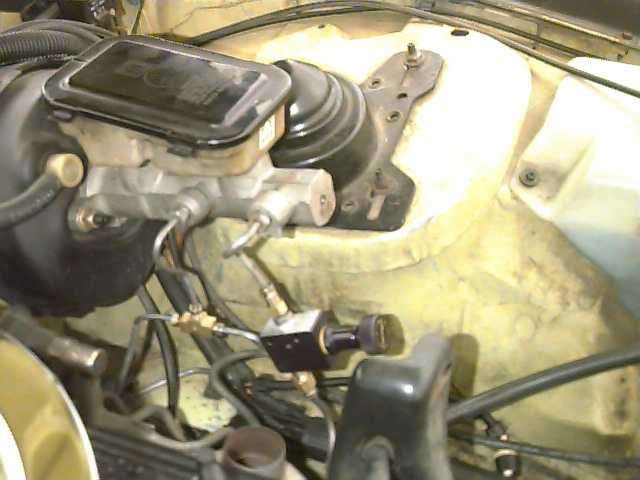Not aware that the two devices are different. However, that does not mean they are calibrated the same. Sorry, it's been decades since I thought about such things. It is also possible your device is not functioning properly. The factory manual suggests measuring the pressure, but when I encountered something similar, I swapped the limiter with a spare.
http://www.e9-driven.com/Public/Library/BMW-E9-Manual/pages/en/34341000.html
There are two primary reasons for changing a working master cylinder. The bore of the 4-disc master cylinder is slightly larger than its 2800cs counterpart. A larger bore in the same pedal configuration results in greater brake fluid volume displacement - with the same pedal stroke. This can result in slightly increased pedal effort. This does not mean that the smaller bore master cylinder wouldn't work with the conversion, any more than fitting a different steering gear box with an altered gear ratio wouldn't work to steer the car. Depending upon the use of the vehicle, some operators might not notice the difference. (Of course there are some drivers who might notice a change of .5 lb/sq.in.
spare tire pressure!)
A secondary reason for changing the master cylinder when converting from a disc-drum combination to a 4 wheel disc system might be the one-way check valve that fits between the master cylinder and the rear brake lines. The valve maintains a minimal amount of rear line pressure to drum brakes to counteract mechanical spring pressures. Consider that drum brakes typically have mechanical return springs, forcing brake shoes to retract and avoid contacting the drums. Disc brake design precludes the need for the mechanical spring pressure, and, consequently, the 4-wheel disc braking system does not employ a check valve to the rear wheels. Removal of the in line brass-alloyed check valve is advised when converting from drum to disc brakes.
The so-called pre-pressure check valve is "no 1" in the diagram below.
HTH






